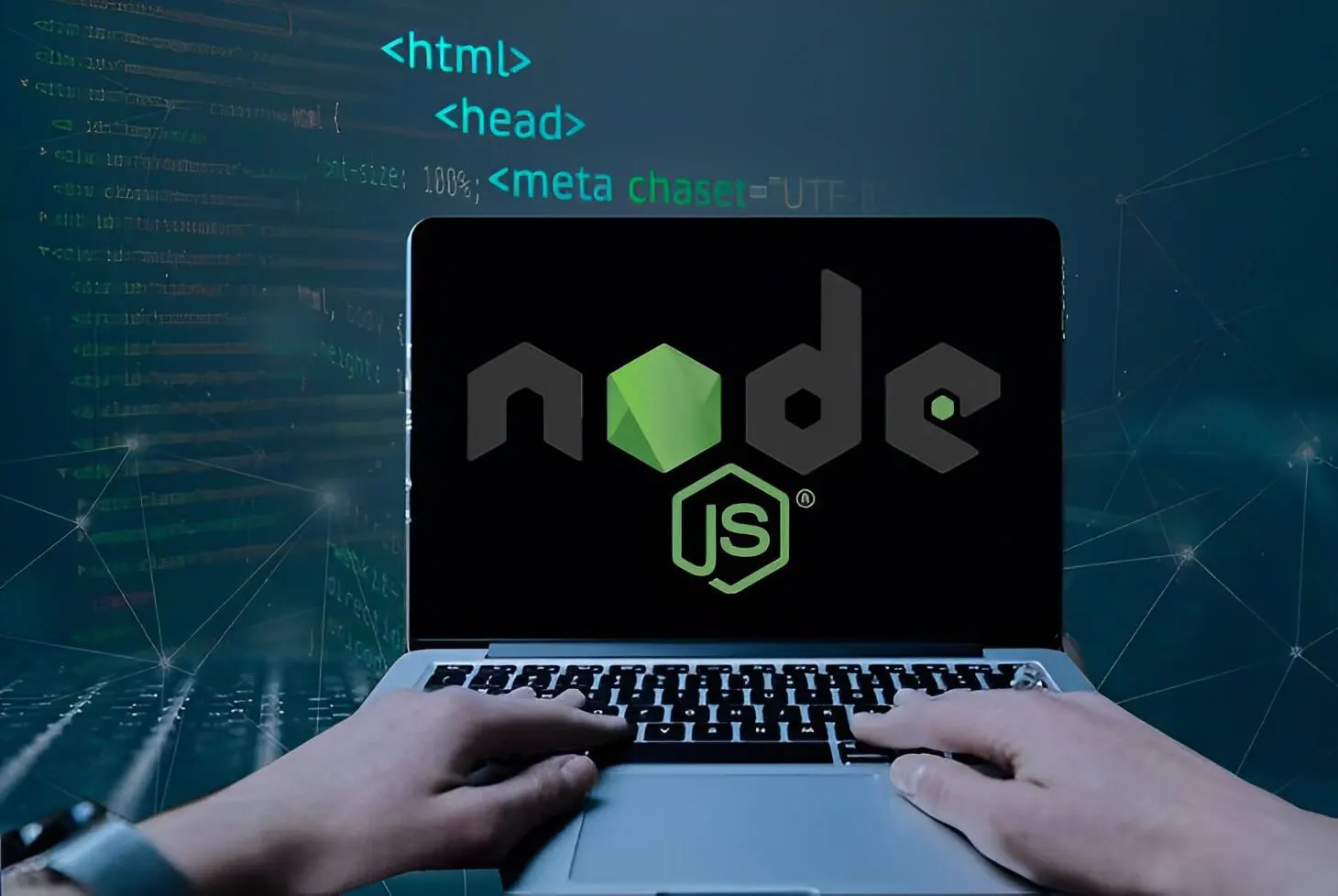From HTML to Node.js: The Journey of Full Stack Web Development
 Sanjeet Singh
Sanjeet SinghIntroduction
In the expansive realm of web development, mastery of both frontend and backend technologies is indispensable for aspiring full-stack web developers. This odyssey typically commences with a firm grasp of HTML, CSS, and JavaScript fundamentals, pivotal for constructing the frontend of web applications. As one progresses, delving into server-side programming becomes imperative, with Node.js emerging as a potent ally for backend development. In this guide, we embark on a comprehensive journey transitioning from HTML to Node.js, traversing the essentials of full-stack web development.

Understanding HTML
HTML, or HyperText Markup Language, serves as the bedrock of web development, delineating the structure of web pages using elements like headings, paragraphs, images, and links. Grasping HTML entails comprehending its syntax, tags, and attributes. With HTML, you craft the skeletal framework of a website, dictating the organisation and presentation of diverse elements to users.
Mastering CSS:
Cascading Style Sheets (CSS) complement HTML by endowing web pages with style and aesthetics. CSS empowers developers to govern layout, colors, fonts, and overall appearance, enriching the visual allure and user experience of web applications. Proficiency in CSS involves understanding selectors, properties, and values, enabling customization of HTML elements to align with design preferences.
Exploring JavaScript:
JavaScript, a dynamic programming language, reigns supreme in web development, fostering interactivity and functionality within websites. As one delves into JavaScript, familiarity with variables, data types, operators, functions, and control structures ensues. JavaScript facilitates the creation of dynamic, interactive web pages by responding to user actions, manipulating the DOM (Document Object Model), and orchestrating events.
Transitioning to Backend Development:
While frontend technologies revolve around the presentation layer of web applications, backend technologies orchestrate server-side logic, data storage, and database interaction. Venturing from frontend to backend development constitutes a pivotal juncture in the evolution toward full-stack proficiency. Here, Node.js emerges as a favoured conduit, owing to its efficiency, scalability, and JavaScript-based runtime environment.
Introduction to Node.js:
Node.js epitomises an open-source, cross-platform JavaScript runtime environment, executing JavaScript code beyond the confines of a web browser. It facilitates the construction of scalable, high-performance network applications, leveraging an event-driven, non-blocking I/O model. Understanding Node.js fundamentals, including the event loop, modules, and packages, lays a sturdy foundation for backend development.
Working with Express.js:
Express.js, a minimalist web framework for Node.js, simplifies the development of web applications and APIs with its robust feature set for routing, middleware, and HTTP request/response handling. Express.js expedites backend logic development by furnishing a structured framework and seamless integration with other Node.js modules and libraries.
Building RESTful APIs:
REST (Representational State Transfer) stands as a ubiquitous architectural style for crafting networked applications, notably prevalent in web services development. Leveraging Node.js and Express.js, developers can fashion RESTful APIs to facilitate communication between client-side and server-side components of web applications. These APIs streamline CRUD operations (Create, Read, Update, Delete) on resources, standardizing data manipulation approaches.
Integrating with Databases:
Databases play a pivotal role in web development, housing and managing application data. Node.js boasts support for diverse database systems, encompassing relational databases such as MySQL, PostgreSQL, and SQLite, alongside NoSQL databases like MongoDB. Leveraging libraries like Sequelize or Mongoose, developers can establish database connections, define data models, execute queries, and oversee transactions within Node.js applications.
Securing Your Applications:
Security stands as a cornerstone in web development, safeguarding sensitive data and thwarting unauthorised access or attacks. Node.js offers an array of security mechanisms, including HTTPS for encrypted communication, middleware for authentication and authorization, and packages for mitigating prevalent security vulnerabilities such as XSS (Cross-Site Scripting) and CSRF (Cross-Site Request Forgery). Adherence to security best practices ensures the integrity and confidentiality of full-stack web applications.
Conclusion:
Transitioning from HTML to Node.js involves mastering both frontend and backend technologies for full-stack web development. Proficiency in HTML, CSS, JavaScript, and Node.js is essential for creating dynamic, scalable web applications. Understanding frontend design, backend logic, API development, database integration, and security protocols empowers developers to craft robust web solutions. Continuous exploration of emerging technologies and enrollment in full- stack web developer course in Kolkata, Delhi, and other Indian cities facilitate skill development in this ever-evolving field.
Subscribe to my newsletter
Read articles from Sanjeet Singh directly inside your inbox. Subscribe to the newsletter, and don't miss out.
Written by

Sanjeet Singh
Sanjeet Singh
I work as a professional in Digital Marketing and specialize in both technical and non-technical writing. My enthusiasm for continuous learning has driven me to explore diverse areas such as lifestyle, education, and technology. That's what led me to discover Uncodemy, a platform offering a wide array of IT courses, including Python, Java, and data analytics. Uncodemy also stands out for providing the java training course in Mohali locations across India, including Faridabad and Jabalpur. It's a great place to enhance one's skills and knowledge in the ever-evolving world of technology.